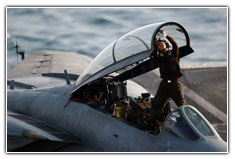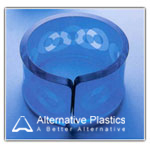The history of Acrylic - By Alternative Plastics Ltd
Acrylic – or Polymethyl Methacrylate – PMMA - has been around since 1928, and today it’s one of the world’s most popular forms of clear plastic. Look around: you’ll find it in jewellery, cutlery handles, DVDs, and even furniture.
 Two companies led the development of acrylic back in the 1930s, both were manufacturing the same compound under different brand names. American firm DuPont named their acrylic ‘Lucite’, and began selling it to the medical industry to replace the glass in medical instruments. At the same time, Rohm & Haas were producing ‘Plexi-glass’ sheets for aeroplane and automobile manufacturers – capitalising on its shatter-resistance. Both companies played a key part in carving the way for this uniquely adaptable plastic.
Two companies led the development of acrylic back in the 1930s, both were manufacturing the same compound under different brand names. American firm DuPont named their acrylic ‘Lucite’, and began selling it to the medical industry to replace the glass in medical instruments. At the same time, Rohm & Haas were producing ‘Plexi-glass’ sheets for aeroplane and automobile manufacturers – capitalising on its shatter-resistance. Both companies played a key part in carving the way for this uniquely adaptable plastic.
After WWII, acrylic appeared in more creative guises. The 1960s ushered in a generation of plastic jewellery-wearers who filled their homes with dramatic plastic furniture. Acrylic – which could be transparent or coloured, thin or thick, rounded or sharp – was easily adaptable to almost any purpose. Jewellery designers delighted in it, and the acrylic revolution began. But the extent of acrylic’s uses had only been glimpsed.
 Artists took acrylic to new levels – creating pieces that challenged the limits of material, dramatic chandeliers, and enormous sculptures. Even Salvador Dali was known to paint on acrylic sheets.
Artists took acrylic to new levels – creating pieces that challenged the limits of material, dramatic chandeliers, and enormous sculptures. Even Salvador Dali was known to paint on acrylic sheets.
More practically, acrylic was put to use as car number plates, laser-disks, and coffee tables. Its versatility makes it ideal for many applications, whatever industry it’s in.
In the medical arena, Acrylic has a distinguished history. As well as being used in fibre-optic instruments, it’s frequently used for dentures and other cosmetic implants. In powdered form, this synthetic acrylic can be used as bone cement. Is there anything acrylic can’t do?...